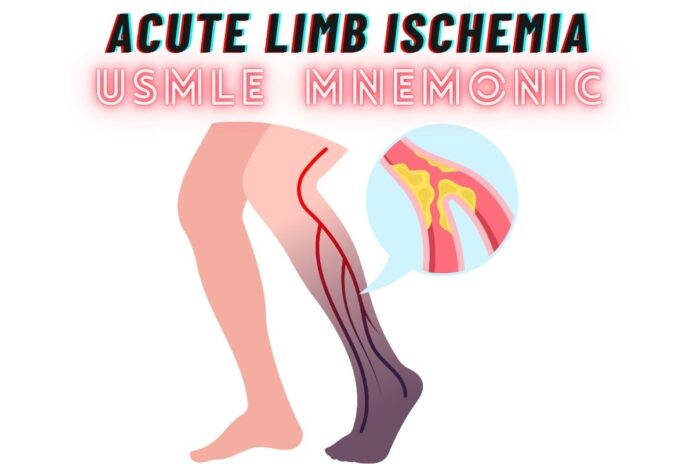Let’s talk about one of those “don’t-miss” emergencies that show up unannounced, often during your pre-lunch ward round. 🍽️

Acute limb ischemia (ALI) — a true vascular drama. No time for coffee, no time for consultation. If you don’t recognize it early, the next stop is amputation. Or worse.
So how do we remember the classic signs?

Easy. Just count to five.
Mnemonic: The 5 P’s of Acute Limb Ischemia

Findings in acute limb ischemia: The 5 P’s
| P | Finding | Clinical Nugget |
|---|---|---|
| Pain | Sudden, severe pain | Often the first symptom. Think “vascular lightning bolt” ⚡ |
| Pallor | Pale limb | Compare limbs. If one looks like a ghost’s leg, be worried 👻 |
| Pulselessness | Absent distal pulses | Use Doppler if unsure — your fingers might lie, but the Doppler won’t. |
| Paraesthesia | Numbness/tingling | A sinister sign — nerves don’t like ischemia much more than muscles do. 🧠 |
| Paralysis | Weakness or no movement | Late and dangerous — if you’re seeing this, you’re racing against necrosis ⏱️ |
🏥 Real Talk from Quetta
I still remember a middle-aged farmer brought into our ER at Sheikh Khalifa Bin Zayed Hospital, his left leg cold and waxy pale, with toes he could no longer feel — or move. No trauma, no recent procedures. Just a thromboembolic surprise.
Doppler was silent. Echo revealed atrial fibrillation (which had been quietly brewing for months). A few hours later, he was in vascular surgery.
Lesson? Don’t wait for all five P’s to show up like Avengers. If you see Pain + Pulselessness alone — that’s already an emergency.
🚨 High-Yield Tips for the Wards and Exams:
- ALI is a surgical emergency. Delay = limb loss. 🦵💀
- Most commonly due to embolism (especially from AFib) or thrombosis.
- Compare both limbs — color, temperature, cap refill, pulse.
- Always ask about onset — sudden = embolic, gradual = thrombotic or chronic.
- Start heparin immediately while arranging for vascular team input.
- In some cases, compartment syndrome can follow revascularization — monitor closely.
Happy learning folks! 🙂
📚 Written by:
Dr. Aurangzaib Qambrani
MBBS, PLAB, MRCP-UK
Departments: General Medicine, Gastroenterology, Cardiac Care Unit
Sheikh Khalifa Bin Zayed Hospital, Quetta
Discover more from Bibliobazar Digi Books
Subscribe to get the latest posts sent to your email.




